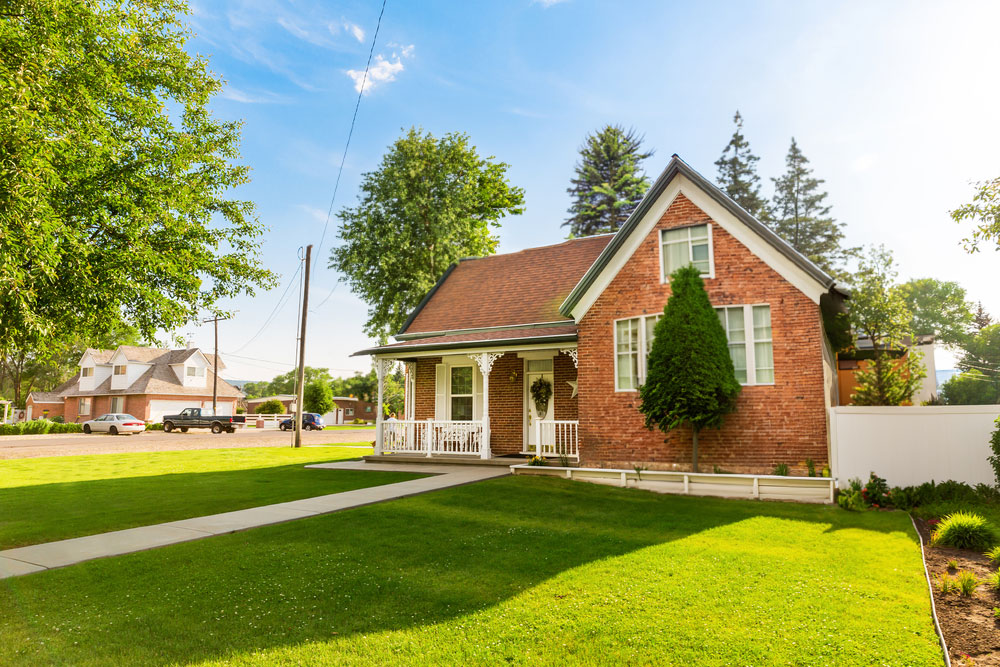Without a solid foundation, your home could develop serious structural problems and may eventually collapse. That’s why protecting your foundation is so important. Most slab foundations have a great deal of durability, but they can still get damaged. If you’re not careful, you could end up dealing with ongoing repairs as soon as you see cracks, upheavals, or sinkholes. Because it plays such a critical role in your home’s structural integrity, it’s important to do the proper maintenance.
Regular foundation maintenance will not only keep any serious issues from developing but will also keep repair costs down to a minimum. Here are some tips on how you can keep your slab foundation properly maintained.

#1: Schedule a Regular Plumbing Session
Plumbing leaks are one of the biggest causes of foundation problems, so you should check for leaks in every part of your plumbing systems. This includes any of the following:
- Sprinkler systems.
- Freshwater lines.
- Sewer lines.
In ideal circumstances, it should be done at least once a year. If you do find a plumbing leak, you should contact a professional as soon as possible. The first thing a plumber will do is run a hydrostatic test, because it will help to identify any plumbing issues (including ones that can’t be seen).
#2: Install a Root Barrier
Installing a root barrier around your home will protect your foundation from any invasive root systems, which can cause heaving in driveways and sidewalks. They can also cause cracks in your walls. In some cases, it can cause problems with your sewer line. Some of the common trees with invasive root systems include:
- Silver Maple.
- American Elm.
- Live Oaks.
- Magnolias.
Root barriers are usually installed 30 inches deep and can keep these roots away from your home.
#3: Protect Your Foundation from Large Trees
Everyone loves the look of a majestic tree in front of their home, but what they don’t know is that it can pose a significant threat to your home’s foundation. Trees need moisture to survive, and one large tree can consume as much as 150 gallons of water in a single day. It can absorb this water from the soil surrounding your home through a process known as “transpiration.” This can damage your home’s foundation over time and can even send roots under the slab.
Avoid planting any of the following trees:
- Maple.
- Elm.
- Magnolia.
- Chinese Pistach.
- Live Oak.
- Bradford Pear.
These trees have very deep and strong roots that can damage your foundation. Experts also recommend planting trees at least the distance away from your house covered by a mature canopy, but it will depend on the type of tree you want to plant.
#4: Make Sure Your Home is on the Right Slope
A good slope for your home makes sure that water flows away from your foundation and is sometimes referred to as a “positive slope.” If it moves in the opposite direction, it’s referred to as a “negative slope” (which is bad for your foundation). You need to make sure that the ground around your foundation has been properly graded.
According to experts, your yard should have a 2% slope, which is a half-inch per foot (or two inches in eight feet). It can be a laborious process. But with a little “sweat equity,” you can do it as a DIY project. But it might be in your best interest to hire a professional.
#5: Make Sure Your Home Has a Good Drainage System
Foundation upheaval is often the result of too much moisture in the surrounding soil, and you’ll start to see it when your foundation rises above its intended position. This problem is often caused by negative sloping, which directs water toward your foundation instead of away from it. Gutters and downspouts also play a major role, so you want to clean them on a regular basis. Otherwise, rainwater can overflow onto the brick or foundation.
Downspouts are an important part of a good gutter system, so you should make sure they’re clean as well. You may need to use a plumber’s snake to clear out a clogged downspout. But if you’re still having problems even after regular cleaning, you should think about installing a surface drain. You can also install a French drain if the surrounding soil is always damp.
If you need to find one of the best places for foundation repair in Corpus Christi, be sure to reach out to Streem Foundation Repair.
